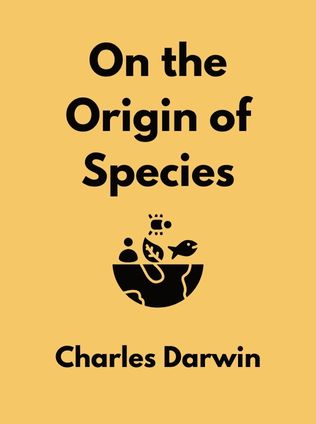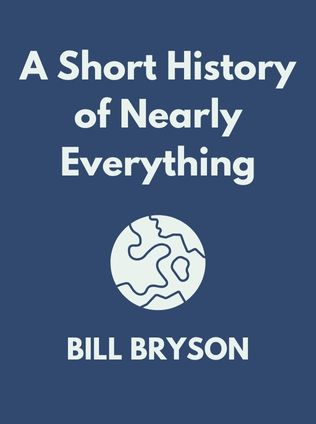
On the Origin of Species
By Charles Darwin
Published 01/1859
About the Author
Charles Darwin, born on February 12, 1809, in Shrewsbury, England, is a towering figure in the world of science, often regarded as the father of evolutionary biology. His work, On the Origin of Species, published in 1859, revolutionized our understanding of life on Earth. Darwin's journey to this monumental work began with his early fascination with the natural world, which was nurtured by his family, particularly his grandfather, Erasmus Darwin, who was also a naturalist. This curiosity led Darwin to pursue a career in science, culminating in his voyage aboard the H.M.S. Beagle from 1831 to 1836. It was during this voyage, particularly in the Galápagos Islands, that Darwin made the observations that would eventually lead to his theory of natural selection.
Darwin’s work was controversial in its time, as it directly challenged the prevailing views of creationism that were deeply rooted in Christian doctrine. The idea that species were not immutable and that they evolved over time through natural processes was a radical departure from the belief that all species were created perfectly and remained unchanged. Despite the initial resistance, Darwin's theory has since become a cornerstone of modern biology, influencing a wide range of disciplines including genetics, ecology, and anthropology. Darwin's ability to observe, reason, and communicate his ideas has left an indelible mark on the scientific world, making him one of the most influential figures in history.
Main Idea
On the Origin of Species presents the groundbreaking idea that species evolve over time through a process called natural selection. This theory posits that individuals within a species exhibit variations, and those with traits that are advantageous for survival and reproduction are more likely to pass on these traits to their offspring. Over many generations, these advantageous traits accumulate, leading to the development of new species. Darwin’s theory challenged the traditional view of creationism, which held that all species were created independently and were unchanging. Instead, Darwin proposed that all life is connected through a vast tree of common ancestry, with species diverging from shared ancestors over time.
Darwin's theory of evolution by natural selection provided a naturalistic explanation for the diversity of life on Earth. It suggested that the complex web of life we see today is the result of gradual changes over immense periods of time, driven by the need to adapt to changing environments. This idea not only transformed the field of biology but also had profound implications for how we understand our place in the natural world. Darwin's work laid the foundation for the modern synthesis of evolutionary biology, which integrates genetics, paleontology, and other fields to provide a comprehensive understanding of how life evolves.
Table of Contents
- The Theory of Evolution
- The Genealogy of Species
- Arguments Over the Theory of Evolution
The Theory of Evolution
At the heart of Darwin’s theory of evolution is the concept of natural selection, a mechanism that explains how species adapt to their environments over time. Darwin observed that within any population, there is variation among individuals. Some of these variations give certain individuals an advantage in the struggle for existence, allowing them to survive longer and reproduce more. These advantageous traits are then passed on to the next generation. Over many generations, this process can lead to the emergence of new species as populations adapt to their environments.
Variation Within Species
Darwin’s observations of variation within species were crucial to his understanding of evolution. He noted that no two individuals are exactly alike, even within a single species. These differences can be subtle, such as slight variations in the shape of a beak or the color of a feather, but they are significant in the context of natural selection. The variations that enhance an individual’s ability to survive and reproduce are more likely to be passed on to future generations, while those that do not are gradually weeded out. This process, known as natural selection, is the driving force behind evolution.
The discovery of DNA and the field of genetics has since provided a deeper understanding of the mechanisms behind these variations. We now know that genetic mutations—random changes in the DNA sequence—are the source of the variation that natural selection acts upon. Some mutations are beneficial, providing the organism with a trait that gives it a survival advantage, while others are neutral or even harmful. However, it is the accumulation of beneficial mutations over many generations that drives the evolutionary process. This understanding of genetic variation has reinforced Darwin’s theory, providing a molecular basis for the process of evolution.
Natural Selection
Natural selection is the process by which certain traits become more common in a population because they confer a survival or reproductive advantage. Darwin famously described this process as "survival of the fittest," where "fittest" refers to the organisms best suited to their environment. In any given environment, resources such as food, water, and shelter are limited, and individuals must compete for these resources. Those with traits that give them an edge in this competition are more likely to survive and reproduce, passing on those advantageous traits to their offspring. Over time, this process leads to the adaptation of species to their environments.
For example, consider a population of finches with varying beak sizes. In an environment where small seeds are the primary food source, finches with smaller, more precise beaks may be better equipped to access this food. These finches are more likely to survive and reproduce, passing on their small-beak trait to their offspring. Over many generations, the population of finches may evolve to have predominantly small beaks, as this trait becomes more common through natural selection. This example illustrates how natural selection can shape the characteristics of a species over time, leading to the adaptation of species to their specific environments.
Sign up for FREE and get access to 1,400+ books summaries.
You May Also Like
Factfulness
Ten Reasons We're Wrong About the World – and Why Things Are Better Than You Think
By Hans Rosling



















